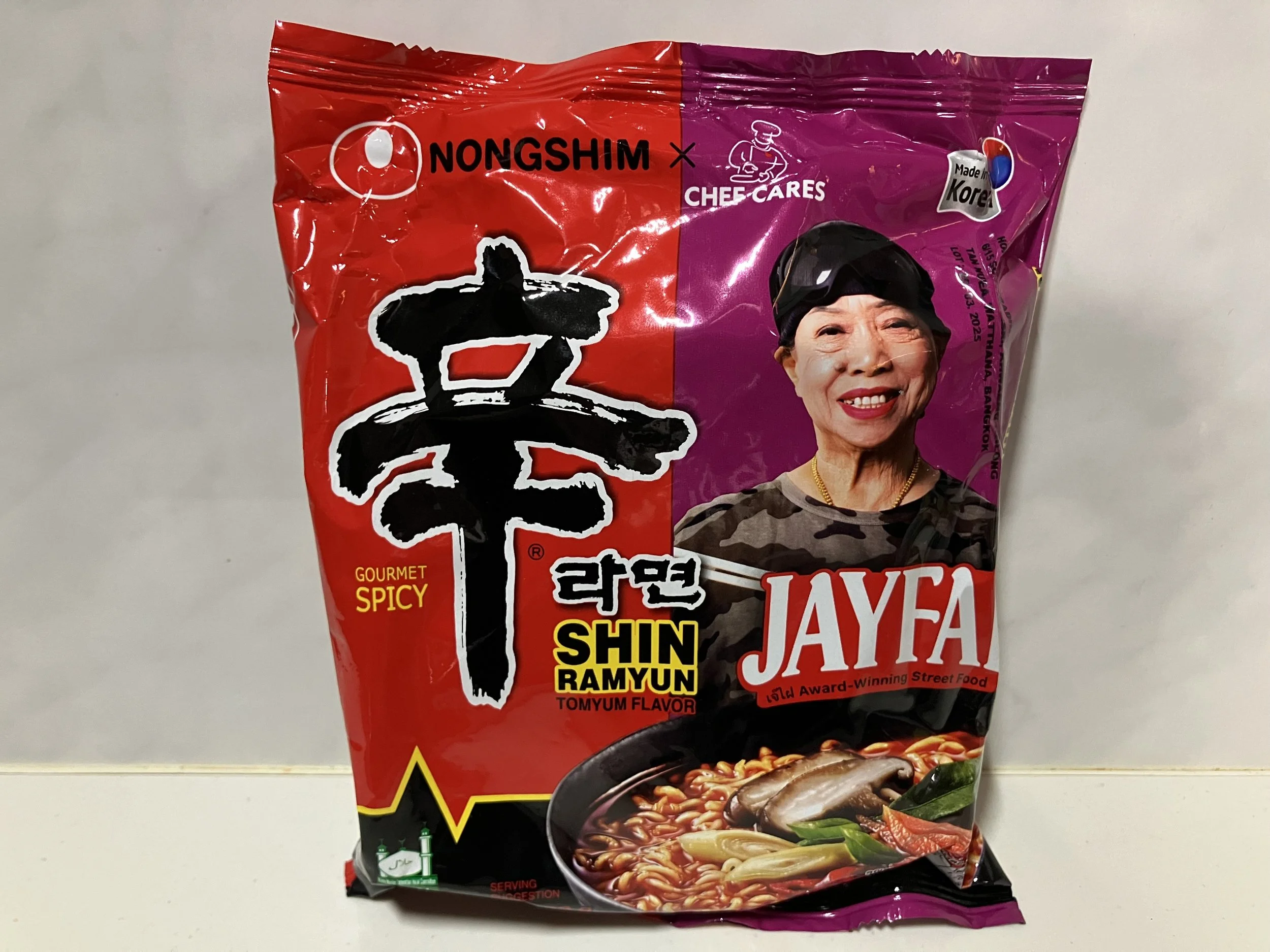Maggi Magic Asia Saucy Noodles Peanut Saté Taste
A small cup of Magic Asia Saucy Noodles Peanut Saté Taste by Maggi.
It’s 2024 and I have just returned from a visit to my home country Germany with some more random instant noodle products in my luggage to criticize. If you look into instant ramen the archives, I have tried a bunch of German/European products yet and none of them have been convincing so far. Some have even been pretty awful, scoring mainly in the lower end of the range. But I realized that I had never given any Maggi product a shot, even though Maggi is a fairly popular instant noodle producer in some parts of the world. For me, they are most well known for their Maggi seasoning, which I would describe as a European soy sauce of sorts, which has a quite strong and unique taste. It is a staple seasoning for soups for many in my family, to the great dismay of my grandmother.
Coming now to the star of the show, today I am trying the “Magic Asia Saucy Noodles Peanut Saté Taste” by Maggi. I am a believer that peanut and chili oil based dishes are really hard to get completely wrong, which steered me a bit away from the traditional cup noodles, which try to imitate Japanese style ramen (I guess?) and get it wrong so often. Saté (or satay) seemed to be all the rage around 10-20 years ago in Germany, when Germans finally discovered that there’s more to South East Asian cooking than Thai curry. Since then, the boom seems to have gone away quite a bit, but it remains a quite popular side dish at various Asian restaurants.
Both sachets contain the same sauce powder. My question: WHY?
Content
This Maggi product immediately starts off interesting, presenting me with 2 rather large sachets. After opening, it turns out that both sachets seem to contain the same sauce powder, since I could not see any differences between the content of the two. The sauce powder consists of starch, palm oil, onion, paprika, garlic, cilantro, curcuma, cumin and salt. A surprisingly long list, which still is missing some chili or anything spicy for my taste.
Oh, and the list is also missing peanuts as ingredient. There are no peanuts in this saté instant noodle cup at all! Which means that any peanut flavor is purely artificial.
Interestingly, this Maggi cup noodle is made in Ukraine, which is only mentioned after the Spanish ingredient list. Curious.
Cup with added sauce powder.
The thin noodles come in a block and are fried, made of wheat flour and sunflower oil.
The whole cup clocks in at moderate 363 calories.
The finally prepared Maggi Magic Asia Saucy Noodles Peanut Saté Taste.
Preparation
The cup recommends a kind of unique process:
Add boiling water up to the line and close the lid.
Wait 1 minute, then stir everything around.
Wait 4 more minutes, then dig in!
The gooey sauce sticks very well to the thin fried noodles.
Review
It is hard to not be enthralled by the peanut aroma that emanates from the cup after adding the boiling water. It immediately transports you to the Asian restaurant with your favorite saté dish.
Once I pulled out the noodles with my chopsticks, it became clear how viscous the sauce actually is. It really sticks well to the noodles and remains that way throughout the meal. Flavor wise, it does have a nice peanut flavor to it, but the thickening agents kind of mellow it down too much. It is quite noticeable that the sauce is mainly made with starch instead of peanuts. Remember, there are no peanuts in here whatsoever. For having no peanuts in it whatsoever, it is surprisingly peanutty though. Ah, the wonders of modern food science!
Talking about the noodles, my first impression was right: 5 minute of soaking produces overcooked soft and soggy noodles. And indeed, the noodles were very soft and yet kind of brittle. In between the gooey starchy sauce, the noodles become just a kind of consistency breaker in the background, rather than their own thing. Very typical for European instant noodles, the noodle quality is very bad, there is no other way to say this.
Besides the noodles and the sauce, there is nothing else here, no other topping or veggie that would break up the monotony a bit.
Now, with all that being said, I did not dislike them completely. You probably need to customize them with maybe some fish sauce, some chopped roasted peanuts and chili flakes/powder. But if you do, they are tolerable.








